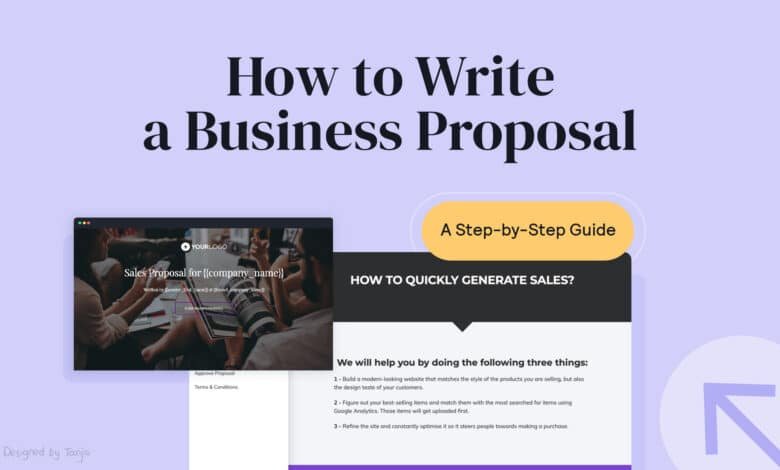How to Write an Effective Business Proposal

How to Write an Effective Business Proposal: A Comprehensive Guide
A well-crafted Write an Effective Business Proposal is essential for securing new clients, partnerships, or funding. Whether you’re an entrepreneur pitching to investors, a service provider offering solutions to potential clients, or a business looking to collaborate with other firms, a strong proposal can make a significant difference. This guide provides a step-by-step approach to writing an effective business proposal.
1. Understanding the Purpose of a Business Proposal
A business proposal is a formal document intended to persuade potential clients, partners, or investors to take a specific action. It outlines the problem or need, presents a solution or offer, and demonstrates the value and benefits of your proposal. Understanding its purpose helps in tailoring the content to effectively address the recipient’s needs and expectations.
2. Research and Preparation
Know Your Audience:
- Research the recipient’s business, industry, and needs.
- Tailor your proposal to address their specific pain points and goals.
Define Your Objectives:
- Clearly outline what you aim to achieve with your proposal.
- Identify the key outcomes you want to deliver and how they align with the recipient’s needs.
Gather Relevant Information:
- Collect data, case studies, and evidence that support your proposal.
- Include industry insights and trends that reinforce your credibility and expertise.
3. Structuring Your Business Proposal
Cover Page:
- Include the proposal title, your company’s name, the recipient’s name, and the date.
- Add a professional logo and contact information for a polished look.
Executive Summary:
- Provide a brief overview of the proposal’s key points.
- Summarize the problem, your solution, and the benefits to the recipient.
Problem Statement:
- Clearly define the issue or need that your proposal addresses.
- Use data or examples to illustrate the significance of the problem.
Proposed Solution:
- Describe your proposed solution or offer in detail.
- Highlight how it addresses the problem and meets the recipient’s needs.
Implementation Plan:
- Outline the steps required to execute your solution.
- Include timelines, milestones, and resource requirements.
Benefits and Value Proposition:
- Detail the advantages of your solution for the recipient.
- Explain how it adds value, improves efficiency, or solves specific problems.
Budget and Pricing:
- Provide a detailed cost breakdown for your solution.
- Justify the pricing by linking it to the benefits and value provided.
Company Information:
- Include background information about your company, including your experience, expertise, and past successes.
- Showcase relevant case studies or testimonials if available.
Terms and Conditions:
- Outline the terms of engagement, including payment terms, confidentiality agreements, and other relevant conditions.
Conclusion and Call to Action:
- Summarize the key points of your proposal.
- Include a clear call to action, such as scheduling a meeting or signing a contract.
Appendices:
- Attach any additional documents, charts, or detailed data that support your proposal.
4. Writing Tips for a Compelling Proposal
Be Clear and Concise:
- Use straightforward language and avoid jargon.
- Ensure that your proposal is easy to read and understand.
Focus on the Recipient:
- Tailor the proposal to the recipient’s needs and preferences.
- Address their concerns and priorities directly.
Use Persuasive Language:
- Highlight the benefits and advantages of your solution.
- Use compelling language to persuade the recipient of the value you offer.
Proofread and Edit:
- Review the proposal for grammar, spelling, and formatting errors.
- Ensure that all sections are complete and cohesive.
5. Presentation and Delivery
Format Professionally:
- Use a clean and professional layout with consistent fonts and headings.
- Include visuals, such as charts or graphs, to enhance understanding.
Submit Promptly:
- Deliver the proposal within the agreed timeframe.
- Follow up to confirm receipt and offer to address any questions.
Prepare for Follow-Up:
- Be ready to discuss your proposal in detail and answer any questions.
- Provide additional information or revisions if requested.
6. Evaluating and Refining Your Proposal
Seek Feedback:
- After submission, request feedback from recipients or colleagues.
- Use their input to refine and improve future proposals.
Analyze Success Rates:
- Track the success of your proposals and identify patterns.
- Adjust your approach based on what works best for your target audience.
Writing an effective business proposal requires a clear understanding of your audience, a well-structured document, and a compelling presentation. By following this guide, you can create a proposal that effectively communicates your value and increases your chances of achieving your business goals.




